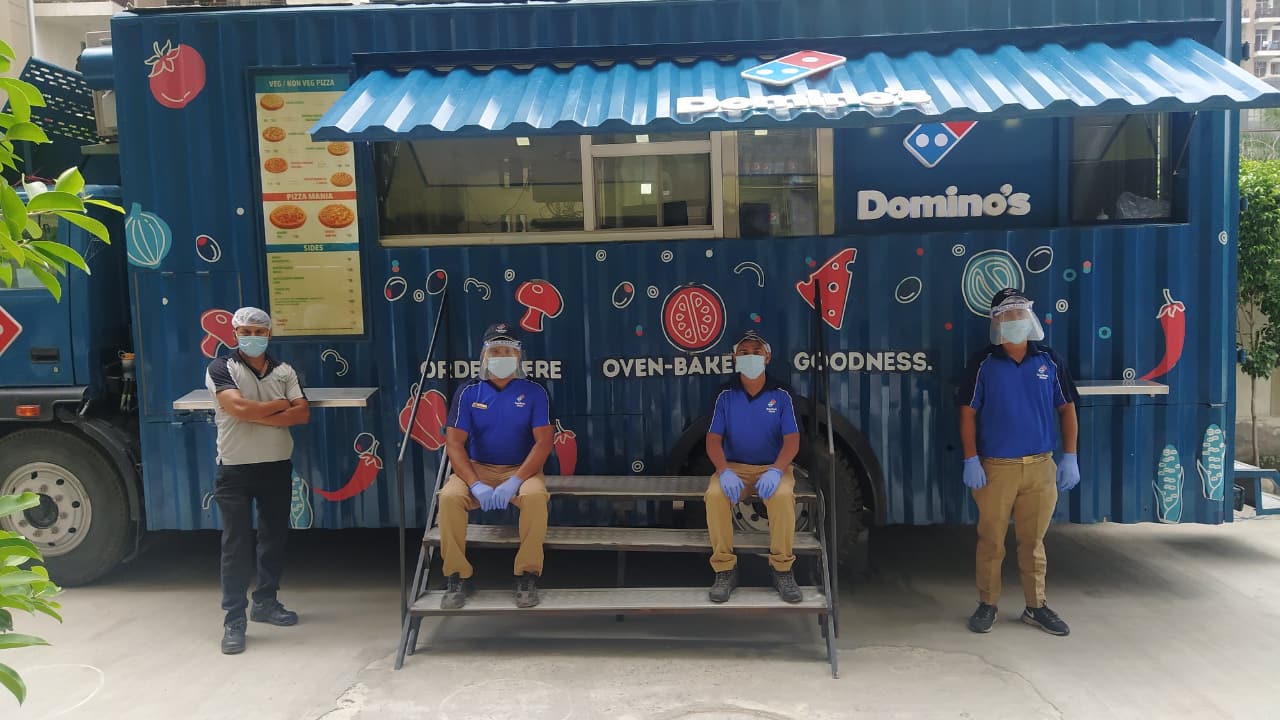An accelerating COVID-19 vaccination drive, robust hiring in the financial services, information technology (IT) and IT-enabled services (ITes) sectors, coupled with record-low home loan interest rates, helped housing sales double to 60,000 units in seven top Indian cities in the quarter ended September from a year earlier.
Even so, prices were little changed. Analysts predict an uptick in prices as demand gradually exceeds supply.
In previous periods of high demand, housing prices invariably rose steeply. In the pandemic, developers have been offering buyers sweeteners in the form of discounts and other sops to push deals, effectively keeping a lid on prices, according to data from property consultants.
Prices rose by 2% to 6% in some markets such as Hyderabad and Bengaluru on the back of more tech companies and startups setting up offices in the cities and renewing their leases, prompting higher demand for housing.
As homebuyers took advantage of pandemic-induced stimulus offered by the government and support measures by banks to buy apartments and houses, average prices roles by 3% across the seven cities in the third quarter of the calendar year, data shared by ANAROCK Research showed.
Even the mall increase was attributed to the higher cost of construction. From a year ago, the average price rose in the seven top cities rose to Rs 5,760 per sq. ft. from Rs 5,600 per sq. ft. The increase, by 4% to Rs. 5,150 per sq.ft, was the highest in Bengaluru.
Essentially, prior to the September quarter, average property prices across cities remained stagnant. Developers ought to offer either discounts or sops such as goods and services tax (GST) waivers and stamp duty, that lowered the cost of acquisition for homebuyers.
To be sure, the trend varied from project to project and city to city.
Demand drivers
Homes priced between Rs 40 lakh and Rs. 80 lakh and those between Rs 80 lakh and Rs 1.5 crore dominated the new supply with a share of 41% and 25%, respectively. The share of affordable housing fell to 24% in the quarter, ANAROCK Research said.
“IT/ITeS continues to drive the bulk of housing demand in the top seven cities," said Anuj Puri, chairman of ANAROCK Group.
"The ongoing WFH {work from home} culture continues to influence residential sentiment on two major fronts -- overall housing demand and unit sizes. The fast-paced vaccination drive is an added sentiment booster, especially in terms of increased site visits,” he said.
Range-bound price hikes helped.
“Unlike the previous times, this time around the developers are hiking prices in a disciplined manner and only to take care of the rise in input costs. The developers are cognizant of the fact that any unwarranted price hike will deter the demand cycle,” said Puri.
According to a report by Knight Frank India, weighted average prices across markets remained stable in the third quarter and did not decline. In Chennai, Hyderabad and Kolkata, property prices increased marginally on a year-on-year basis.
Stamp duty cuts have proved to be an effective demand stimulant in the case of Mumbai, Pune and Kolkata, where state governments have implemented a broad-based cut across ticket sizes in the primary market.
New launches
Developers have pursued an aggressive pricing strategy over the year with spot discounts, financing deals and other freebies to entice buyers, the report said.
Developers have responded well to the shift in homebuyer sentiment, launching new projects to capitalize on the surge in demand. New launches rose 90% year-on-year during the third quarter, with supply growing at a healthy pace in all the markets.
As with sales, the number of units launched in the period exceeded the 2019 pre-pandemic quarterly average by 6%. Price declines have been arrested in most cities because of the higher demand, and prices have in fact risen, albeit marginally, in Chennai, Hyderabad and Kolkata. Knight Frank said.
After six to seven years of steady decline, property prices have started improving, according to a report by financial services firm Motilal Oswal that said a possible supply crunch would mean prices inch up.
Over the next four to five years, prices will be 1.3-1.4 times the current levels, or 4-5 percent on a compound annual average rate basis, forecast the report, which said prices had hit rock bottom and would pick up in the near term as demand exceeds supply.
Housing demand momentum has accelerated over the last two months, picking up from where it left off before the second wave of COVID-19, and has absorbed a large part of the completed and near-complete inventory across markets. Consumers have realised the importance of home ownership, and strong IT hiring and salary revisions have helped prop up demand, Motilal Oswal said.
According to a quarter 3 update released by Jones Lang LaSalle, price increases are expected to remain range-bound. Residential prices in a majority of India’s residential markets have remained stagnant in the last few years, it noted.
To offer a better picture of where real estate prices are headed, PropTiger.com compared the sale prices of properties across major markets: Bengaluru, Chennai, Delhi-National Capital Region (Delhi, Gurugram, Noida, Greater Noida, Ghaziabad and Faridabad) and the Mumbai Metropolitan Region (Boisar, Dombivli, Mumbai, Mazagaon, Panvel, and Thane West).
Mumbai
Mumbai , the financial hub known for its towering skyscrapers and high cost of living, has emerged as the most expensive place to buy property in the country.
One- to two-bedroom properties in the Mumbai MMR region cost around Rs 50 lakh and Rs 1 crore, respectively, according to sale price data collated by PropTiger.com from January to September 2021.
Three- to four-bedroom properties cost closer to Rs 2 crore and Rs 5 crore, respectively, over the same period.
Prices for homes with one and two bedrooms remained relatively stable in the year to September. Prices of larger three-bedroom properties rose over 4 % annually by the end of September — particularly in more desirable neighbourhoods such as Powai, Mira Road and Andheri West, data shared by PropTiger showed.
“July-September quarter of this year has seen residential demand grow by 59 percent YoY, along with the rebound in high frequency indicators, thus signalling towards a robust recovery in the Indian residential market. Historically low interest rates, developer discounts, lucrative offers and importantly the value of owning a home will shape residential demand in the coming quarters,” said Ankita Sood, director and head of research at PropTiger.com
Delhi-NCR
India’s capital Delhi and its surrounding micromarkets such as Noida, Greater Noida, Gurgaon and Faridabad, is perhaps the most affordable real estate market in the country.
One- and two-bedroom properties measuring up to 1,500 sq ft in Noida can set you back by Rs 73 lakh, and by Rs 1 crore in Gurgaon, according to data collated by PropTiger.com
Three to four bedroom properties measuring 2,500 sq ft to 3,500 sq ft cost around Rs 2.1 crore in Gurugram and Rs 1.7 crore in Noida.
Hyderabad
Hyderabad is fast catching up with Bengaluru as an IT hub. One- to two-bedroom properties in Hyderabad cost around Rs 45 lakh and Rs 70 lakh, respectively, as of September, according to PropTiger.com.
Three- and four-bedroom properties cost an average Rs 1-3 crore. Independent bungalow deals too have picked up of late in areas such as Banjara Hills and Jubilee Hills. Overall, property prices appreciated by 6% in Hyderabad, PropTiger analysis said.
"Despite the price rally, demand for property in Hyderabad continues to be robust. This is reflected not only in the sales numbers but also in the city’s inventory profile. During the July-September quarter of 2021, a total of 7,812 units were sold across the city, demonstrating an upswing of 222% quarter-on-quarter and 140% year-on-year," said Sood.
Bengaluru
In Bengaluru, one- to two-bedroom properties cost around Rs 40 lakh to Rs 70 lakh, according to September data compiled by PropTiger.com. Three- and four-bedroom properties cost Rs 1 crore to 2 crore.
Property prices across the board in Bengaluru increased by around 4% year-on-year. Low interest rates, pandemic-induced stimulus and more tech companies and start-ups setting up offices and renewing their leases have created a perfect storm for the city’s property prices, the analysis said.
Financially strong developers have the edge
The pace of consolidation is accelerating. The share of large and listed players in sales has risen significantly in the last few years from 17% in the financial year 2017 to 31% in the first quarter of financial year 2022.
Given a changing business environment and rising compliance requirements, the share of large and listed entities in sales is likely to rise to 40% by financial year 2025, according to data shared by ANAROCK Research.
In the last few months, new project launches by big developers have received strong buyer demand.
- Godrej Properties achieved sales of Rs 575 crore on a single day at the launch of the second phase of its project Godrej Woods in Noida.
- Prestige Estates was able to sell over 800 plots worth Rs 850 crore in September 21 in its Great Acres project.
- Brigade launched 12 new projects across 4 mn sq ft in August 2021
- Mahindra Lifespaces recorded sales of over 200 units with an average ticket size of Rs 40 lakh within a month of the launch of its Happines project in Chennai
According to ANAROCK Research, large developers are recording strong sales and improving their financial positions to prepare themselves for future demand. Listed realty companies shed 37% of their debt in 18 months.




































